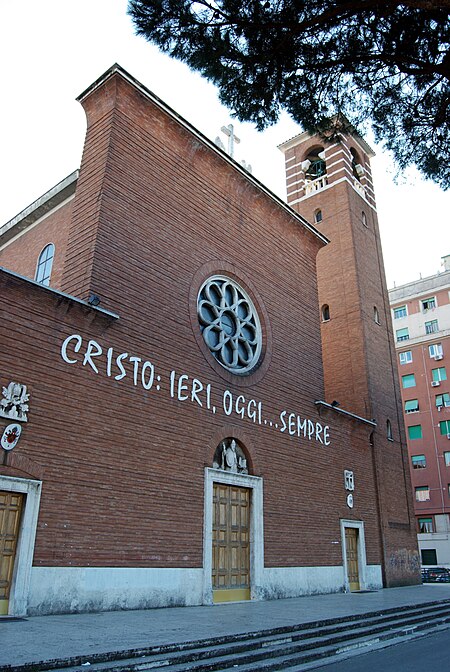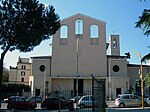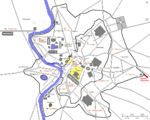San Leone I
20th-century Roman Catholic church buildings in ItalyRoman Catholic churches completed in 1952Rome Q. VII Prenestino-LabicanoTitular churches

The church of San Leone is a church of Rome in Prenestino-Labicano district, in via Prenestina. It is dedicated to the fifth-century pope, Pope Leo I.
Excerpt from the Wikipedia article San Leone I (License: CC BY-SA 3.0, Authors, Images).San Leone I
Via Prenestina, Rome Municipio Roma V
Geographical coordinates (GPS) Address External links Nearby Places Show on map
Geographical coordinates (GPS)
| Latitude | Longitude |
|---|---|
| N 41.8909 ° | E 12.5293 ° |
Address
Chiesa di San Leone
Via Prenestina
00176 Rome, Municipio Roma V
Lazio, Italy
Open on Google Maps











